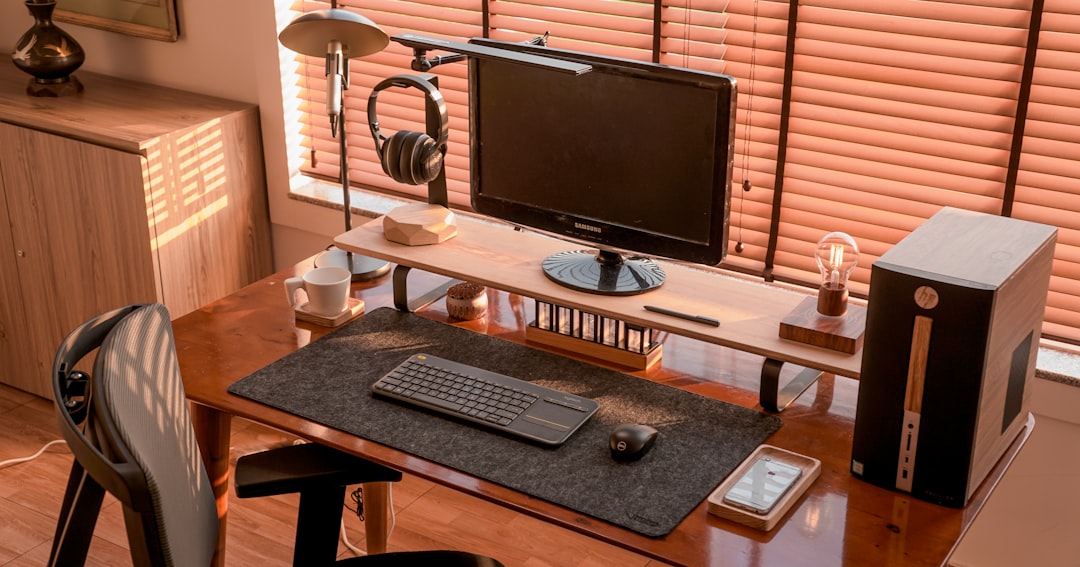When setting up a workspace, most people focus on CPU speeds, memory, or software tools, often overlooking a critical component that heavily influences productivity and comfort: the monitor’s refresh rate. Though commonly associated with gaming, refresh rates also play a crucial role in professional environments. Whether you’re editing videos, designing graphics, managing spreadsheets, or just working on documents for hours on end, the refresh rate of your monitor can significantly impact visual comfort, efficiency, and health.
What Is Refresh Rate?
The refresh rate of a monitor, measured in Hertz (Hz), indicates how many times per second the display refreshes the image. For example, a monitor with a 60Hz refresh rate updates the image 60 times per second. Higher refresh rates like 75Hz, 120Hz, or even 240Hz allow for smoother visuals and motion clarity.
Although these higher refresh rates are prominent in gaming setups, more workplaces are starting to adopt monitors with elevated refresh rates due to their improved visual performance and ergonomic benefits.
Why Refresh Rates Matter in a Work Environment
At first glance, it may seem like refresh rate doesn’t matter unless you’re gaming or watching high-frame-rate videos. However, there are solid reasons why professionals should care about refresh rates too:
- Reduced Eye Strain: A higher refresh rate results in less flicker, which reduces eye fatigue during extended screen time.
- Smoother Scrolling: Activities like reading long documents, browsing web pages, or navigating large spreadsheets benefit from smoother transitions.
- Improved Cursor Tracking: Designers and editors will find that higher refresh rates make cursor movement more responsive and accurate.
- Better Visual Experience: A sharper and smoother visual presentation leads to an overall more relaxing work environment.
Common Refresh Rate Options and Their Use Cases
There are various refresh rate options available today. Below are the most common ones and insights about when and where they shine.
60Hz – The Standard
Most budget or office monitors utilize a 60Hz refresh rate. It’s suitable for general office work such as emailing, typing documents, and basic web browsing. However, prolonged sessions can lead to eye strain, and motion doesn’t appear as smooth compared to higher refresh rates.
75Hz – The Balanced Choice
Stepping up from 60Hz, a 75Hz monitor offers slightly smoother motion, which can be beneficial for creative professionals and multitaskers. It is a balance between affordability and increased comfort. For many, it’s the sweet spot for business use.
120Hz and 144Hz – Overkill or Essential?
These refresh rates are usually found in premium monitors. While they are popular among gamers, professionals in video editing, motion graphics, and animation industries will appreciate the heightened accuracy and fluidity in visual rendering. Even office workers can benefit from such monitors when dealing with visually intensive tasks or multitasking on multiple screens.
Image not found in postmeta
240Hz and Beyond – Specialized Use
These ultra-high refresh rates are excessive for most professionals unless they’re involved in real-time simulation, UX testing, or specific engineering tasks that require extreme motion clarity. For everyday work scenarios, these are generally not necessary and are cost-inefficient.
How Refresh Rate Impacts Productivity
The refresh rate affects how smooth and responsive the display feels. Smoother visuals reduce cognitive effort, allowing workers to concentrate better and get more done. Especially for tasks involving:
- Fast typing and document navigation
- Spreadsheet work involving scrolling across large data sets
- Creative tasks in design tools like Adobe Photoshop, Illustrator, or After Effects
- Meetings and presentations that involve screen sharing and visual walkthroughs
A responsive monitor minimizes frustrations and saves seconds that stack up throughout the day, indirectly contributing to measurable productivity gains over time.
Pairing Refresh Rate with Other Display Specs
A high refresh rate is just one piece of the puzzle. To get the best work experience, users should consider combining it with the following specifications:
- Resolution: A higher resolution such as 1440p or 4K provides more workspace and clarity.
- Screen Size: Larger screens make it easier to multitask effectively, though pixel density must still be considered.
- Panel Type: IPS panels offer better color accuracy and viewing angles—great for professionals dealing with visuals.
- Ergonomics: A height-adjustable stand and anti-glare coating are ergonomic factors that synergize with higher refresh rates to provide a more comfortable experience.

Important Considerations Before Upgrading
Before purchasing a high refresh rate monitor exclusively for work, consider these points:
- Computer Compatibility: Ensure your graphics card and connectors (like HDMI or DisplayPort) support higher refresh rates at desired resolutions.
- Actual Benefit: Evaluate whether your job type really requires the advantages that come with higher refresh rates.
- Budget: High refresh rate monitors can be expensive. Ensure the benefits align with the investment.
For those working primarily in text-heavy environments or project management, a well-calibrated 75Hz monitor might suffice. For designers and content creators, moving up to 120Hz or 144Hz can offer noticeable workflow enhancements.
Conclusion
Monitor refresh rates are more than just a gaming spec. For professionals spending hours each day in front of a screen, the refresh rate can be the difference between a tiring workday and a productive one. Higher refresh rates reduce eye fatigue, enhance motion fluidity, and contribute to a more enjoyable and efficient working experience.
As the line between consumer tech and professional equipment blurs, investing in a monitor that balances resolution, refresh rate, and ergonomics could be one of the best decisions for long-term productivity and health.
Frequently Asked Questions
1. Is a 144Hz monitor worth it for office work?
If your job involves design, video editing, or multitasking across multiple applications, a 144Hz monitor provides noticeable comfort and efficiency. For basic document processing, a 60Hz or 75Hz may be sufficient.
2. Can a higher refresh rate reduce eye strain?
Yes. Higher refresh rates result in less flicker, which is easier on the eyes during extended periods of screen usage. Monitors with refresh rates of 75Hz and above are often more comfortable than 60Hz screens.
3. Does my computer need a special graphics card to use high refresh rates?
Potentially, yes. Some older or integrated graphics solutions may not support high refresh rates at higher resolutions. Check your system’s GPU and monitor connection compatibility (HDMI 2.0, DisplayPort, etc.).
4. Is there a noticeable difference between 60Hz and 75Hz?
While it’s not a massive leap, many users report a smoother experience, especially when scrolling, moving the mouse, or working with dynamic content.
5. Does a high refresh rate affect power consumption?
Slightly. Higher refresh rates may consume more energy, but the difference is generally negligible for most users. However, in environments with many monitors, this could be a consideration.
